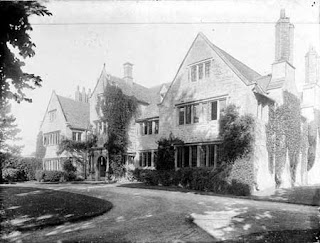The well-heeled crowd might have been a lively congregation at an Upper East Side church or synagogue.
Except for the green paddles with the big white numbers.
Valuable and sentimental belongings of Elaine's eponymous restaurant and the legendary restaurateur's penthouse apartment (her "fortune of solitude ") were on the auction block. The cherished treasures of the restaurant sometimes called "the living room for New York's 'cop and writer set' " were up for sale at Doyle's elegant auction house on Manhattan's East 87th Street at 2 P.M. September 20, 2011.
I watched the crowd fill the room at Doyle's until there was barely room to stand, much less breathe. A mix of glamour and plain folks. The only celebrity I recognized was Dr. Ruth, or her lookalike! Lots of air-kissing, glitter mixed with tieless shirts and jeans, mostly middle-aged, middle-class, well-educated, sophisticated, lots of grey/white hair. (On the men, mostly!) Chic and fashionably shabby. I looked for my MWA colleague, Stuart Woods, who often writes a wonderful scene at Elaine's in his books! Maybe he phoned in his bids!
Yes, it was a party atmosphere, not funereal.
The Queen would have loved it!
An iconic landmark had closed after 47 years, only months after the death of the owner, Elaine Edna Kaufman, the irascible, beloved den mother, also the tough businesswoman, who ruled over her domain with an iron fist and a surprisingly tender, generous heart.
Elaine's was a writer's room. One writer wrote after her death from emphysema and hypertension, December 3, 2010, at Lenox Hill Hospital, "That kingdom has lost its queen!"
People often came to Elaine's with their suitcases, before checking into a hotel. If you were rich and famous, you might get a chair at Table # 1. People wanted her affection. She had a gift not only at putting people together, but in putting movie deals together.
She never let you sit alone, if she knew you. The place was a home for her extended family. She might join you at the table and eat half your food, often picking up youir tab, if you were down on your luck.
She might yell at you, throw you out - but few women in the Big Apple got so many flowers and morning-after phone calls!
She had "the touch" in creating relationships between gifted people - writers, editors, producers.
She liked people "who did things", whether in government, Hollywood, Broadway, the newsroom. Even nurses, circus performers, police - the people who were the best of what they did!
Everyone wanted to please Elaine, wanted to prove themselves to her. The eatery was a haven for show business and literary notables.
And Elaine Kaufman was larger than life, an earth mother queen, who ruled her kingdom perched on a stool at the end of her 25-foot mahogany bar, behind her oversize glasses, schmoozing with her celebrity clientele.
Born February 10, 1929, Elaine grew up in Queens and the Bronx. She started her career in the restaurant business in 1959, with boyfriend Alfredo Viazzi, at Portofino in Greenwich Village. In 1963 she went on her own and bought an Austrian-Hungarian on the upper east side, on 2nd Avenue and 88th Street, which became a world-reknowned haven for glittery literati, in the longest run of a sole proprietor, made more famous by A. E. Hotchner's book EVERYONE COMES TO ELAINE'S.
Blunt and fearless with celebrities, Elaine was the master of sound bites.
An avid collector of art and books, she was a purveyor of style. In her possession were works of prominent artists - Helen Frankenthaler, Reginald Marsh, George Segal, Andy Warhol, David Hackey, Alberto Giacometti- books inscribed by Katherine Hepburn, Kirk Douglas, Truman Capote, a variety of memorabilia, furniture, decorations, fashion and accessories, that Elaine collected or received as gifts.
Some were on display in the New York landmark restaurant; others were seen by selected guests at her elegant penthouse on East 86th Street, her personal sanctuary, with its wraparound terrace, wood-burning fireplace and a view of the East River.
Her "own space", where she relaxed by watching cowboy movies. "It's all me. And mine," she said of her home, where she kept a 100-year-old slot machine, a Jamie Wyeth drawing, a signed baseball from George Steinbrenner, a Russian coffee set, a single off-white orchid, and photos of herself with Norman Mailer and Michael Caine.
After the auction a friend asked me what I bought. I was just there to observe and pay my own silent tribute to a rara avis . . .
But if I'd had a paddle, I'd have bid for these items:
- A set of Elaine's monogrammed hand towels.
- Table # 1 with set of 4 cafe chairs, the first table in "the line", and the most desirable in the house. People sat there to see and be seen.
- An iconic vintage black painted cash register that occupied the place of honor behind the bar.
- A painted papier mache figure of a Christmas carousel horse that hung in Elaine's front window for years.
Ave atque vale, Elaine Kaufman. May flights of angels sing thee to thy rest . . .
Thelma Jacqueline Straw



































